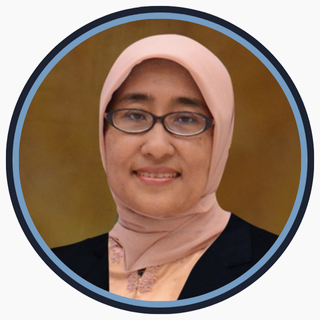THE EPIDEMIOLOGICAL OVERVIEW OF ACUTE FLACCID PARALYSIS CASES IN SURABAYA DURING 2014-2017
Downloads
Background: During 2017 to 2018, 168 polio cases were found globally that caused an increase of awareness towards the emergence of poliovirus in Indonesia. AFP surveillance was the primary strategy to overcome global polio. Therefore, the understanding of the epidemiological characteristics becomes very important to improve the success of AFP surveillance systems. Purpose: This study aims to describe the epidemiological characteristics and types of diagnosis of AFP cases in Surabaya from 2014 to 2017. Method: This study was a descriptive study with a case series design. Data sources utilized was secondary data from AFP surveillance report of Surabaya City Health Office from 2014 to 2017. Results: Total AFP cases in Surabaya from 2014 to 2017 recorded 54 cases with annual AFP Non-Polio Incidence rate of approximately 3.85/100,000 children aged <15 years old in 2017. The result of the final diagnosis was Guillain Barre Syndrome (GBS) (44.44%). AFP mostly affected children in the age of group 1-4 years old (42.59%). Most AFP cases occurred in men (74.07%) and were more commonly found in areas with a high population density. The increasing case pattern occurred in October in the last two years. Conclusion: The AFP Non-Polio case finding in Surabaya was classified high with the highest case pattern during 2014-2017. The incidents occurred in male at the age group 1-4 years old, and Guillain Barre Syndrome became the most common case diagnosis.
Ansari, B., Basiri, K., Derakhshan, Y., Kadkhodaei, F., & Okhovat, A. (2018). Epidemiology and clinical features of guillain-barre syndrome in Isfahan, Iran. Advanced Biomedical Research, 7, 87. https://doi.org/10.4103/abr.abr_50_17
Chowdhury, F. R., Ibrahim, Q. S. U., Shafiqul Bari, M., Jahangir Alam, M. M., Dunachie, S. J., Rodriguez-Morales, A. J., & Ismail Patwary, M. (2018). The association between temperature, rainfall and humidity with common climate-sensitive infectious diseases in Bangladesh. PLoS ONE, 13(6), 1–17. https://doi.org/10.1371/journal.pone.0199579
Deliana, S., Yendra, R., & Desvina, A. P. (2018). Factor analysis that affecting cases of acute flaccid paralysis (AFP) in Indonesia using generalized poisson regression. STNKI, 10(1), 605–612.
Díaz-Soto, S., Chavez, K., Chaca, A., Alanya, J., & Tirado-Hurtado, I. (2019). Outbreak of guillain-barre syndrome in Peru. ENeurologicalSci, 14(2), 89–90. https://doi.org/10.1016/j.ensci.2019.02.001
Ghazavi, M., Moghim, S., Sabaghi, A., Fadaei, R., & Naeini, A. (2015). Acute flaccid paralysis surveillance: A 6 years study, Isfahan, Iran. Advanced Biomedical Research, 4(1), 99. https://doi.org/10.4103/2277-9175.156670
Health Office of East Java Province. (2018). Health profile of East Java Province in 2017. Health Office of East Java Province. Surabaya City.
Hughes, R. A. C., Cornblath, D. R., & Willison, H. J. (2016). Guillain-barré syndrome in the 100 years since its description by Guillain, Barré and Strohl. Brain: A Journal of Neurology, 139(11), 3041–3047. https://doi.org/10.1093/brain/aww247
Indonesian Central Bureau of Statistics. (2015). Report the average temperature of BMKG observations. Central Bureau of Imdonesia Statistics. Jakarta. Retrieved April 18, 2019, from https://www.bps.go.id/statictable/2017/02/09/1961/suhu-minimum-rata-rata-dan-maksimum-di-stasiun-pengamatan-bmkg-oc-2011-2015.html
Jasem, J. A., Marof, K., Nawar, A., Khalaf, Y., Al-Hamdani, F., Ali, S., ... Islam, K. M. M. (2014). An epidemiological analysis of acute flaccid paralysis and its surveillance system in Iraq, 1997-2011. BMC Infectious Diseases, 14(48), 1–9. https://doi.org/10.1186/1471-2334-14-448
Khona, P., Prayag, A., & Ashtagi, G. (2016). Study of acute flaccid paralysis cases at tertiary care hospital Belagavi, Karnataka. International Journal of Medical Science and Public Health, 6(2), 398–401. https://doi.org/10.5455/ijmsph.2017.18082016630
Li, X., Ting, M., & Lee, D. E. (2018). Fast adjustments of the Asian summer monsoon to anthropogenic aerosols. Geophysical Research Letters, 45(2), 1001–1010. https://doi.org/10.1002/2017GL076667
Loo, Y. Y., Billa, L., & Singh, A. (2015). Effect of climate change on seasonal monsoon in Asia and its impact on the variability of monsoon rainfall in Southeast Asia. Geoscience Frontiers, 6(6), 817–823. https://doi.org/10.1016/j.gsf.2014.02.009
Maan, H. S., Dhole, T. N., & Chowdhary, R. (2019). Identification and characterization of nonpolio enterovirus associated with nonpolio-acute flaccid paralysis in polio endemic state of Uttar Pradesh, Northern India. PLoS ONE, 14(1), 1–18. https://doi.org/10.1371/journal.pone.0208902
Macesic, N., Hall, V., Mahony, A., Hueston, L., Ng, G., Macdonell, R., ... Grayson, M. L. (2016). Acute flaccid paralysis: the new, the old, and the preventable. Open Forum Infectious Diseases, 3(1), 1–4. https://doi.org/10.1093/ofid/ofv190
Makoni, A., Chemhuru, M., Gombe, N., Shambira, G., Juru, T., Bangure, D., & Tshimanga, M. (2017). Evaluation of the acute flaccid paralysis (AFP) surveillance system, Gokwe North district, Zimbabwe, 2015: a descriptive cross sectional study. Pan African Medical Journal, 27(203), 1–5. https://doi.org/10.11604/pamj.2017.27.203.10956
Masa-Calles, J., Torner, N., López-Perea, N., Torres de Mier, M. de V., Fernández-Martínez, B., Cabrerizo, M., ... Castrillejo, D. (2018). Acute flaccid paralysis (AFP) surveillance: challenges and opportunities from 18 years' experience, Spain, 1998 to 2015. Eurosurveillance, 23(47), 1–13. https://doi.org/10.2807/1560-7917.es.2018.23.47.1700423
McMichael, A. J. (2015). Extreme weather events and infectious disease outbreaks. Virulence, 6(6), 543–547. https://doi.org/10.4161/21505594.2014.975022
Ministry of Health RI. (2007). Decree of the Minister of Health of the Republic of Indonesia no. 483 of 2007 concerning guidelines for surveillance of acute flaccid paralysis (AFP). Jakarta: Ministry of Health RI.
Ministry of Health RI. (2018). Indonesian health profile in 2017. Ministry of Health RI. Jakarta.
Mohsin, N., & Asimi, R. (2016). Clinical profile of acute flaccid paralysis. The Medical Journal of Malaysia, 4(2), 196–200. https://doi.org/10.4103/2321-4848.196193
Momen, A. A., & Shakurnia, A. (2017). The epidemiology of guillain-barré syndrome in children under 15 years old in Southwest Iran. Biomedicine Hub, 2(3), 1–8. https://doi.org/10.1159/000480693
Odoom, J. K., Afia, N., Ntim, A., Sarkodie, B., Addo, J., Minta-asare, K., ... Barnor, J. S. (2014). Evaluation of AFP surveillance indicators in polio-free Ghana, 2009-2013. BMC Public Health, 14(687), 1–8. Retrieved from http://www.biomedcentral.com/1471-2458/14/687
Soltani, J., Esmailnasab, N., Roshani, D., Karimi, M., & Amjadi, M.-J. (2014). Acute flaccid paralysis and its differential diagnosis in in kurdistan province, Western iran; an 11-year surveillance. Iranian Journal of Pediatrics, 24(2), 131–139.
Surabaya Health Office. (2017). Health profile of Surabaya City in 2016. Surabaya Health Office. Surabaya City.
Wachira, V. K., Peixoto, H. M., & de Oliveira, M. R. F. (2019). Systematic review of factors associated with the development of Guillain–Barré syndrome 2007–2017: what has changed? Tropical Medicine and International Health, 24(2), 132–142. https://doi.org/10.1111/tmi.13181
Webb, A. J. S., Brain, S. A. E., Wood, R., Rinaldi, S., & Turner, M. R. (2017). Seasonal variation in Guillain-Barré syndrome: a systematic review, meta-analysis and Oxfordshire cohort study. Journal of Neurology, Neurosurgery and Psychiatry, 86(11), 1196–1201. https://doi.org/10.1136/jnnp-2014-309056
Willison, H. J., Jacobs, B. C., & van Doorn, P. A. (2016). Guillain-barré syndrome. The Lancet, 388(10045), 717–727. https://doi.org/10.1212/CON.0000000000000513
- Every manuscript submitted to must observe the policy and terms set by the Jurnal Berkala Epidemiologi
- Publication rights to manuscript content published by the Jurnal Berkala Epidemiologi is owned by the journal with the consent and approval of the author(s) concerned. (download copyright agreement)
- Complete texts of electronically published manuscripts can be accessed free of charge if used for educational and research purposes according to copyright regulations.

JBE by Universitas Airlangga is licensed under a Creative Commons Attribution-ShareAlike 4.0 International License.























